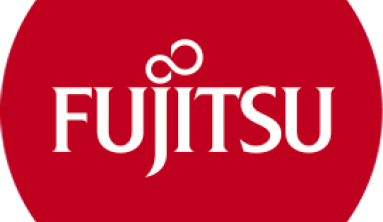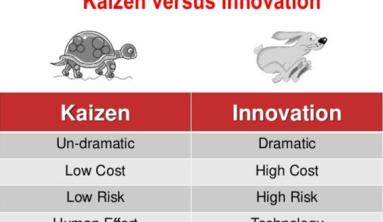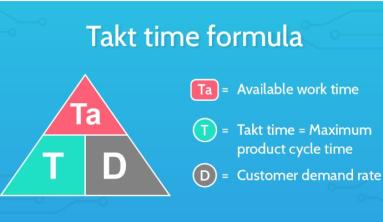June 28, 2011 by Dr. Timothy
Toyota has about 45 minutes worth of inventory sitting around at any given time. When I tell people this fact, they are all aghast; particularly those in the healthcare field. What happens if demand exceeds supply? What about the “just in case” exceptions to the rule? What happens when you can’t find what you need? I’ve heard all of these questions and then some.
The truth is, whether you’re in manufacturing or health care, inventory is evil. Worse yet is when people hoard and over-order. I once had a client whose warehouse personnel spent three-quarters of their time restocking items that had been over-delivered to the plant. Someone would call for an expedited order, the warehouse pickers would pick that order and then it would arrive – somewhere. When the person who first called for the expedited order couldn’t find it, they’d call the warehouse again. The pickers would then pick a second or third order. Or worse, they would buy new parts to satisfy the order. Then they would ship the parts to the factory and it would be hit and miss as to whether or not the parts ended up where they were needed.
Toyota learned that lesson in the 1950s, when they were facing bankruptcy. They learned to make just enough, just in time. Their approach at that time was just to make saleable items. This meant having kanbans and just-in-time systems in place; but more than that, it meant having an accurate measure of anticipated demand. The old Big 3 saying, “You can’t sell it if you don’t make it,” proved to be false.
The real question is: Can you produce the necessary items at the lowest cost? By “necessary items,” we mean a sales trend. Every Toyota is sold first, before it is made. It’s true that the dealers buy some cars, especially those made a distance away from where they’re sold, but they know the customer preferences down to their postal code. Very, very rarely does a dealer car not sell.
The Toyota system clearly understands that production systems must accommodate gradual changes in the global market demand, and allows for a better approach to increases and decreases in production demands. In order to systematize such a production system, the shop floor management had to associate a sense of guilt with holding inventories. They had to keep in mind that they were only producing saleable items. Remember, it is wasteful to:
• Produce items that are presumed to sell;
• Produce items in less time than needed; and
• Produce more items than needed.
Over-production can lead to various wastes other than inventories. Increasing in-process stock, waste of movement and wastes of transportation all add up quickly. Truly value-added work comes from having just enough of the right material, at the right place, at the right time. This is what Toyota calls “just in time!”
From the bookshelf
The Toyota Mindset: The Ten Commandments of Taiichi Ohno, By Yoshihito Wakamatsu
Wakamatsu’s book is organized into 10 chapters, each of which he calls “Commandments.” It is said that Ohno lived by these 10 ideas:
• Wastes hide, so start by disclosing all of your mistakes.
• Discover the truth beyond your understanding.
• Increasing production while limiting the number of workers is the only way to gain true success.
• Act on problems right away and do not procrastinate.
• Don’t feel satisfied by saying, “I finished the job”; go beyond that and say, “I can do more.”
• Add “Appropriate Timing” to “Appropriate Method” in problem solving.
• Believe in “I can” and question “I can’t.”
• The key to achieving progress is to never give up.
• Don’t do work at an average pace; the shortest way is always the easiest.
• Change yourself first, if you want to change someone else.
The stories and examples recounted in the book provide valuable insight into Ohno’s belief. As well, it gives a glimpse into the transitional period of Toyota’s history that led to them becoming a world leader in manufacturing. It’s a shame that Ohno’s near-Socratic teaching has fallen out of style; but then again, he could be harsh at times. The Toyota Production System needs to move beyond the slow process of gradual absorption, as shown by the auto giant’s recent growth. The Toyota Business Practices, as championed by Toyota Motor Corp.’s former president, Fujio Cho, are: clarify the problem; breakdown the problem; set a target; analyse the root cause; develop countermeasures; see countermeasures through; evaluate both results and process; and standardize successful processes.
This book gives an in-depth look at the man who revolutionized the way manufacturing, automotive, health care and other areas are done. Anyone who is interested in kaizen, just-in-time or Lean should read this book. The knowledge the author presents will better equip you to deal with problems that may arise in your organization.
Question from the floor
QUESTION: I once heard that the value of a suggestion has to be over so much money before it’s taken seriously. Can you tell me if there’s any truth to this?
ANSWER: I don’t think that suggestions can be evaluated as some being better than others, or that you shouldn’t take a suggestion because it’s not worth enough. If you are trying to build a culture of kaizen, every idea is worthwhile, even if it doesn’t account for much money. This is particularly true when you’re starting to build a kaizen culture and people are not going to be turning in big ideas. They will want to test the waters, turn in small ideas just to see what management does with them. In building your kaizen culture, you are building the notion that it’s the pattern or form of giving continuous improvement ideas. Some ideas will work; some may not work as planned, but it’s the idea that counts. I once heard a GM say that they wouldn’t take any suggestion that didn’t save them some arbitrary amount of money. They simply got it wrong. People started to withhold their ideas until they reached the “magic number” and the result was that the number of suggestions fell. Train your people in root cause analysis and it will mean that they will tackle the larger issues at work.





